 By: Grainne Rhuad and Karla Fetrow
By: Grainne Rhuad and Karla Fetrow
Well it’s February again, and while yes we know Valentine’s Day, or Lupercalia; whichever you prefer has passed by a couple of days, we still wanted to express our subversive love. Just not more than we wanted to smack naked young men running through the hills with blood. Now we have one less thing on our collective bucket list.
Fred Korematsu
 After several years of watching movies about heroic horses and Bands of Brothers and the like, we’d like to bring a bit of appreciation back to the U.S. Home front. We’re prone to try to forget a lot of American citizens were interred in camps at the very same time Jewish Europeans were. We didn’t kill them but we didn’t treat them nicely either and we stole all of their stuff, made them live in substandard facilities like racetrack horse stalls and thrown together barracks and didn’t give them daily supplies that we would expect our criminals to have access to.
After several years of watching movies about heroic horses and Bands of Brothers and the like, we’d like to bring a bit of appreciation back to the U.S. Home front. We’re prone to try to forget a lot of American citizens were interred in camps at the very same time Jewish Europeans were. We didn’t kill them but we didn’t treat them nicely either and we stole all of their stuff, made them live in substandard facilities like racetrack horse stalls and thrown together barracks and didn’t give them daily supplies that we would expect our criminals to have access to.
But in 1942 Fred Korematsu said no to this. At 23 years old he refused to be stuck on a train and sent to a camp. Fred Korematsu chose to defy the order and carry on his life as an American citizen. He underwent minor plastic surgery to alter his eyes in an attempt to look less Japanese. He also changed his name to Clyde Sarah and claimed to be of Spanish and Hawaiian descent. On May 30, 1942, he was arrested on a street corner in San Leandro, California, and taken to San Francisco county jail. While in jail, he was visited by Ernest Besig, the director of the San Francisco office of the American Civil Liberties Union, who asked Korematsu if he was willing to become the test case to challenge the constitutionality of the government’s imprisonment of Japanese Americans. On September 8, 1942, Korematsu was convicted in federal court for violating the military orders issued under Executive Order 9066. He was placed on five-year probation. For several months, he lived at the Tanforan “Assembly Center” in San Bruno, CA, one of the former horse racing tracks where Japanese Americans were first held before being sent to the more permanent American concentration camps. Korematsu and his family were transferred from Tanforan to Topaz, Utah, where the government had set up one of 10 incarceration camps for Japanese Americans.
Believing the discriminatory conviction went against freedoms guaranteed by the Constitution, Korematsu appealed his case all the way to the U.S. Supreme Court. In its December 1944 landmark decision, the high court ruled against him in a 6 to 3 decision, declaring that the incarceration was not caused by racism, and was justified by the Army’s claims that Japanese Americans were radio-signaling enemy ships from shore and were prone to disloyalty. The court called the incarceration a “military necessity.” In one of the three stinging dissents, Justice Robert Jackson complained about the lack of any evidence to justify the incarceration, writing: “the Court for all time has validated the principle of racial discrimination … The principle then lies about like a loaded weapon, ready for the hand of any authority that can bring forward a plausible claim of an urgent need.” (Source: Korematsue Institute)
After the war Fred went on to marry his wife Kathryn, who was a white woman. This was also still illegal in many states and the couple had to move to Detroit to get married. He tried to live out his life with no real intentions of becoming an activist but his U.S. Supreme Court conviction had a lasting impact on his basic rights, affecting his ability to obtain employment.
It wasn’t until the 1980’s that then President Carter began looking into the incarceration of Japanese Citizens during WWII and a committee was appointed. During this process several lawyers in the San Francisco area found Fred’s case and contacted him. His case was finally overturned in 1983.
Afterwards Korematsu did not sit on his laurels. He began working on the cause of Redress for Japanese Americans. He traveled to Washington DC and helped lobby for the passage of the bill which would grant an official apology from the U.S. government and a token compensation of $20,000 for each surviving Japanese American that was incarcerated. This finally signed into law in 1998 by President Regan who initially was against it.
But it wasn’t just Japanese Americans Fred Korematsu was concerned with, after 9/11, Korematsu continued to speak out. In 2003, he filed a “Friend of the Court” amicus brief with the U.S. Supreme Court for two cases appealed before the Supreme Court of the United States, on behalf of Muslim inmates being held at Guantanamo Bay: Shafiq Rasul, v. George W. Bush and Khaled A.F. Al Odah v. United States of America. In the brief, he warned that the government’s extreme national security measures were reminiscent of the past. In 2004, he filed a similar brief on behalf of an American Muslim man being held in solitary confinement in a U.S. military prison without a trial.
Similarly, in his second amicus brief, written in April 2004 with the Bar Association of San Francisco, the Asian Law Caucus in San Francisco, the Asian American Bar Association of the Greater Bay Area, Asian Pacific Islander Legal Outreach, and the Japanese American Citizens League, Korematsu responded to Donald Rumsfeld v. Jose Padilla. The amicus brief’s statement of interest emphasized the similarity of the unlawful detainment of Fred Korematsu during WWII and that of Jose Padilla following the events of 9/11 and warned the American government of repeating their mistakes of the past. He believed that “full vindication for the Japanese Americans will arrive only when we learn that, even in times of crisis; we must guard against prejudice and keep uppermost our commitment to law and justice.”(Source: Korematsu Institute)
Fred Korematsu passed away in 2005 and while he is not in text books nor is there a federal holiday for him, as a defender of civil rights he deserves to be remembered and we hope; emulated.
Curious George Escapes Hitler!
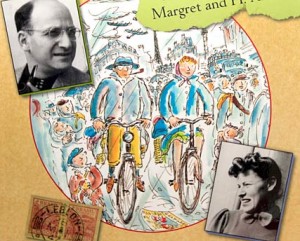 Most kids born after the mid 1940’s know and have affection for Curious George. In fact Curious George himself is defiantly a subversive monkey. Sneaking on to ships to come to American with The man in the big yellow hat. Taking off on adventures that while naughty, also have people opening up and becoming inspired to save that little primate.
Most kids born after the mid 1940’s know and have affection for Curious George. In fact Curious George himself is defiantly a subversive monkey. Sneaking on to ships to come to American with The man in the big yellow hat. Taking off on adventures that while naughty, also have people opening up and becoming inspired to save that little primate.
However, if Margret and H.A. Rey had never fled Paris on bicycles-we assume in the middle of the middle of the night with children’s manuscripts and a sniffing German Sheppard after them- we just like to embellish like that, then we may never have had this book which for generations has taught kids, it’s okay to see what’s possible and, there are very exciting things out there even in our everyday world.
However it happened, we are glad that in their time of trial and stress; in fleeing the country they made it a priority to bring with them their manuscripts of their children’s books including Curious George. It was and remains a risk to bring non-essential things when in flight and for that, we thank them.
Lewis R Redmond
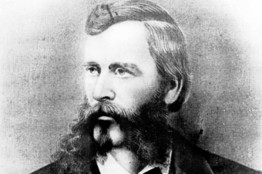 Americans have a great love for the romanticized outlaw. We love Jesse James and we love Doc Holiday. And we should. They stood for something we all want, freedom to live our lives the way we see fit without unnecessary and very often self-serving intervention.
Americans have a great love for the romanticized outlaw. We love Jesse James and we love Doc Holiday. And we should. They stood for something we all want, freedom to live our lives the way we see fit without unnecessary and very often self-serving intervention.
We have a mixed reaction when we perceive outlaws as being very different from us or in producing things without paying taxes like the Moonshiners of yesteryear.
Now we aren’t talking here about the moonshiners caught up with gang activity brought on by a bunch of crooked politicians in the years of Prohibition. Rather we would like to introduce you to an outlaw who started getting in trouble because he didn’t pay his taxes. Kinda like his ancestors likely did in the Revolutionary war a couple generations before him.
Lewis Redmond was a Scots-Irish mountain man who lived in the Blue Ridge Mountains. As anyone who knows about the Scots-Irish and their history, their life was a simple but hardworking one and there were many times when it was hard to get by. Many a man made his money by moonshining, which was not illegal at the time. However when the civil war started up, Alcohol revenue was something that was too enticing to pass up and moonshine fell under that. Lewis Redmond’s life as an outlaw began by not paying taxes.
He became a more ‘wanted’ man when a Federal Marshal came looking to arrest him without a warrant. The result was a dead Marshal and Redmond became a folk hero.
To understand this, one needs to understand the Scots-Irish were a long displaced folk. Casualties of British subjugation, they were families sent to Northern Ireland to try to give the British a foothold there. The Irish understandably didn’t want them and the Scots frankly didn’t want to be a tool for the British. They were effectively starved out and migrated to Nova Scotia and parts of the American South like The Blue Ridge Mountains, places where they would be left alone. They wanted only to live out their life style and culture. In fact many Scots Irish held out against joining the civil war on principle- they didn’t care what the government wanted- until they no longer could and the fight was brought to them.
With this cultural attitude, a man who stands up to unjust charges and refuses to come to town for arrest without the proper paperwork makes complete sense as an outlaw hero.
Redmond avoided the law for several years until he was cornered near his home and shot 13 times. However, he lived and was tried in federal court in Greenville and sentenced to 10 years in prison. Redmond only served 22 months of the sentence before President Chester A. Arthur pardoned him in 1883.
Redmond returned to Walhalla and ironically went to work for a government distillery that produced “Redmond’s Hand Mash” and his picture was on the whiskey’s barrels. He lived a quiet life and died in 1906.
The reason we find him as enticing as a subversive individual is similar to why he was one in the first place. In this time of unjust governmental control on our lives, with issues like immigration, racial profiling, SOPA, and imprisonment without charges, it just feels good to root for an outlaw that said, “I want no part of this, I’m simply trying to get by and take care of mine.” And we suspect the coming years will see more situations where men and women just trying to get by will become outlaws again.
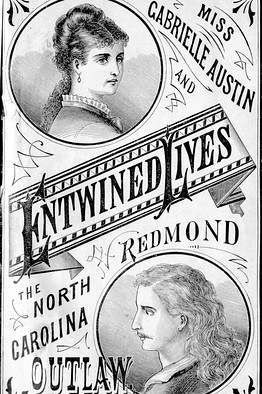
Unnamed Occupiers Everywhere
 Our Subversive love notes wouldn’t be complete this year without a special message of gratitude to the anonymous members of the Occupy movement. Whether you’re an active supporter or feel the global mushrooming protestors will have very little effect on administrative decision making, they have given us a concept; an idea that has not been tried before and is unique in its perception; a leaderless revolution.
Our Subversive love notes wouldn’t be complete this year without a special message of gratitude to the anonymous members of the Occupy movement. Whether you’re an active supporter or feel the global mushrooming protestors will have very little effect on administrative decision making, they have given us a concept; an idea that has not been tried before and is unique in its perception; a leaderless revolution.
We are a society founded on a hierarchy of authorities and leaders. We are accustomed to choosing some from among us to represent the whole. Under the precepts of the Occupy Movement, the whole is determined by giving equal voice to each of the parts unanimously. It is a collective with no political bias, no leadership aspirations, no desire to usurp authority, but demands that the disparity in the wealth be addressed, that the banks return to financial responsibility, that industry ceases squandering our resources and that the global monopolies be brought under control. They are ordinary people with ordinary lives, but the extraordinary idea that we can rebuild from the shambles of our extravagant society, we can find a more compatible life style to suit our environment, we can manage our resources wisely and we can engage in fair trade with other countries without using forceful means. Because they have generated an idea that is slowly blossoming to its fruition, we send the Occupy Movement a love note.
Fr. Bill Bichsel
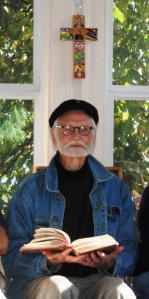 Catholic clergy very often gets a (deservedly) bad rap. So, it is our pleasure when we can add to the lists some that we love and appreciate. Such is the case with Fr. Bill Bichsel.
Catholic clergy very often gets a (deservedly) bad rap. So, it is our pleasure when we can add to the lists some that we love and appreciate. Such is the case with Fr. Bill Bichsel.
83 year old Bichsel, who is of the Jesuit order and has been a long time activist. In June of 2010 he went along with a lot of others to a protest being held against the Y-12 National Security Complex in Oak Ridge, Tenn., where a new nuclear weapons manufacturing facility is being planned. He and others were arrested and he was being held in the Federal Detention Center near Seattle, WA where he was serving a three-month prison term. He had been moved to a transitional facility on Jan 10, 2012 due in part to health issues, but the next day was returned to prison due to a group of Buddhist monks drumming outside of his facility in support of him. Although unprompted or even known by Bichsel, the authorities seem to think he asked the group of monks over to have a demonstration. This would have been hard to do as he was just released from the Detention center and could not have contacted them.
Resultantly Fr. Bichsel began a hunger strike suffered solitary confinement without bedding or heat which caused problems with his circulation. He has since been given a blanket and pillow. He was finally released on Feb 9, 2012
What we really appreciate and love about this man is his continued commitment to fight for what he believes in and remain upbeat in his correspondence even in such conditions. He is an example to us all that age an infirmity are should not excuse us from doing what is right at all costs. It is also a terrible example of just how far below the line of acceptability our own human rights behaviours are here in the states. To find out more about him and his group see Disarm Now Plowshares. We also really like that he has his own “Nonviolent Action Figure.”
[cartoon by R.R. Anderson]
Barbara Wishingrad
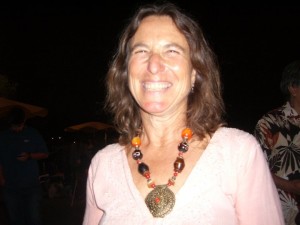 As we spend our time working on stories and working on our own individual lives what we notice and appreciate most are the people who just “do” things. They see a need and they roll up their sleeves. These are the people who would most likely be embarrassed to receive accolades. Barbara Wishingrad is one of these.
As we spend our time working on stories and working on our own individual lives what we notice and appreciate most are the people who just “do” things. They see a need and they roll up their sleeves. These are the people who would most likely be embarrassed to receive accolades. Barbara Wishingrad is one of these.
When Barbara Wishingrad first enrolled in University studies, her ambitions were to become a medical doctor, or a surgeon like her father. Midway through her studies, however, she began to wonder if she had made the right choice. She asked herself if it wouldn’t be more practical to teach preventive medicine than to treat the symptoms of diseases. She switched over to natural medicine, giving her advice freely on diet for everything from diabetes to cancer.
While in her late twenties, she developed an interest in midwifery. This interest took her into Mexico where she began studying and interacting with indigenous midwifes. She often states they were some of the best years of her life. She loved delivering babies in a natural setting and felt the connection between mother and child was far greater in natural childbirth. It was there that she also developed a fascination for the rebozo, a shawl traditional Mexicans wore to ward off the sun, warm their shoulders in the evening and carry their babies in. She began importing rebozos into the United States and giving lectures on their multiple uses and ways of carrying the baby from infant to toddler in them. For awhile, she owned her own company, “The Rebozo Way”, which she sold in recent years.
While still in Mexico, she also developed an interest in natural treatments for cancer patients. She began offering her services in massage therapy and hydrogen peroxide baths. However, eventually, she began to feel the yearn to return home and retired from natural medicine to work full time on her Rebozo project in Santa Barbara, California. Retirement though, is always the furthest thing from Barbara’s mind. It wasn’t long before she became concerned with water conservation and the impact of water shortages due to commercial waste. She began concentrating on what the individual could do to better utilize and conserve water. She attended a seminar in Venezuela dedicated to global water conservation. When she returned to Santa Barbara, she joined a team that specializes in terra-forming gray water runoff for the natural feeding of trees and plants and rain turrets with special water filtering containers. Her volunteer work in water conservation methods prepares the groundwork for a new era of water efficiency use at a time when clean water will become the next critical resource shortage.


Every year I look forward to the subversive love notes. This year I was not disappointed. What a great selection. I appreciate those individuals who are brave and bold with their beliefs and actions. These individuals inspire me.
Interesting read. I found the picks logical and fascinating.
wonderful .. congrats to you both !!!
Maybe we can include the Golden Girls in our Love Notes next year. They certainly changed around the way people think about women after age fifty; sweet little old grandma types that had no lives at all until the children graced them with a visit. I always felt it was unfair that older men could be labeled silver foxes who could be sexy, funny and charming, but not older women; until the Golden Girls came along.